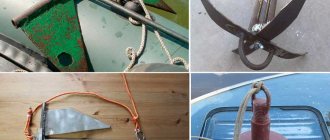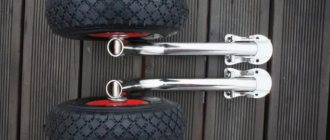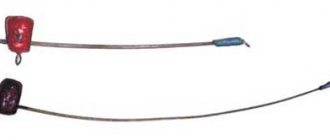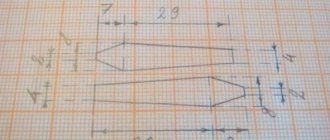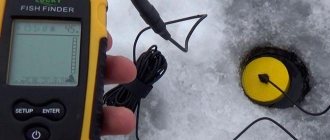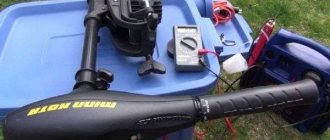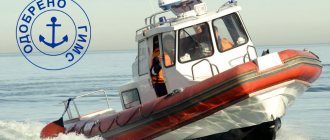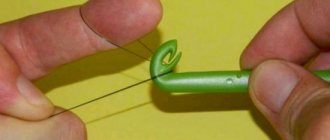Owners of small watercraft are encouraged to make an anchor completely with their own hands not only by the fairly high price of factory anchors. Standard anchors are produced weighing from 5 kg, which is a bit much for a boat with a displacement of up to 500 kg. Especially if they go out into a closed, calm water area (pond, small lake, river). The anchor alone takes up a lot of space in the vessel, and in a tiny boat, such as, for example, a dinghy or skiff, which is popular due to its high qualities, it is inconvenient to hold an unreasonably large anchor. But you can’t stand on just anything instead of a reliable anchor.
It was not for nothing that Joseph Conrad called anchors “honest pieces of iron”: neglecting the reliability of an anchor can cost the life of the boatmaster and passengers even close to the shore. A homemade anchor should hold the ship as firmly as a proprietary branded one, and should not get lost in the ground more often than it does. The reliability of commercially available ultra-light anchors is not guaranteed. Do not trust company certificates: no marine or river register will include an anchor weighing less than 5 kg in its register. Prohibited by international navigation safety regulations. And they, like army regulations, are written in human lives.
Fishing boat at anchor. Caricature
A real tangle of problems is the PVC boat anchor. Firstly, the anchor is only part of the anchor device, consisting of several structural units. Each of them, according to the main rule of strength of strength, “Where it is thin, it breaks,” must be no less reliable than the anchor itself. There is simply nowhere to place all this in an inflatable boat. Secondly, when inflatable boats in the budget price category began to be made not from rubber or rubberized fabric, but from plastic, it turned out that a raised anchor in such a boat could be dangerous - the number of accidents on the water caused by the rupture of the cylinder or the bottom of the boat by the anchor, has increased sharply.
The purpose of this article is to help a novice boatmaster solve the problem of choosing a prototype anchor for his vessel and tell him how to properly make an anchor in accordance with the type of vessel design, its displacement and sailing conditions. A significant part of the material is devoted to the choice and features of the manufacture of anchors for “ultra-small” vessels (up to 0.5 tons) operating on inland waters. The bottom in them is often marshy, muddy or peaty; in such a situation it is difficult both to ensure the proper holding force of the anchor and to prevent it from sinking into the ground.
Note: all inflatable boats have one more difference from normal displacement vessels - very low frictional resistance against the water. An inflatable boat clings to the water less strongly than a glider. On the one hand, this is good for calm water, since it is easier to keep the boat in the current. But in excitement, on the contrary, it is more difficult, because... the float boat tugs hard on the anchor rope. And anchoring an inflatable boat is also more difficult: he cannot rely on the vessel to pull him, lay him down properly on the ground and help him cling to him. Here, the anchor for an inflatable boat must rely only on itself: it should be laid correctly without a jerk from the vessel and have absolute tenacity (see below).
Is the cat an anchor?
To people who go fishing on an old rubber boat, all these considerations may seem far-fetched: of course, it is known that the long-established anchor for a rubber boat is a cat. And it’s not difficult to make: three pieces of reinforcement, two of which have flattened ends, a little bending, a little welding, and the cat is ready. And the tenacity of a cat is absolute if thrown correctly. It is not without reason that hook cats are used in other activities.
Firstly, in terms of holding power, the cat anchor is quite average. True, for a boat that glides through the water almost like a fallen leaf, this is not so significant. Another significant thing is that it is very easy to lose a cat on rocky or muddy ground. When scrap metal was lying everywhere underfoot, and the master at work and without a bottle allowed him to use welding and a bending machine for personal purposes, it didn’t matter, but now are different times.
Secondly, even then there were plenty of accidents on the water due to grapple anchors. And now it has turned out that a cat is dangerous not only in a PVC boat, but also in one made of plywood without a hull, like the same dinghies or skiffs. Molded folding crampons are safe, hold an ultra-small boat well on any ground, are compact, but are unfairly expensive. Although for a sewn boat with a rigid hull approx. A 2.5-3.5 m long homemade folding cat with a swivel paw is also suitable, see for example. video
Video: homemade cat anchor
However, in a PVC boat, even such a cat turns out to be bulky and dangerous for the vessel. Therefore, including what is said above, residents of coastal large waters do not consider a cat to be an anchor at all. And a sailor will never say: “give up the cat” or “stand on the cat,” just as he will not say “drop anchor.” A cat is not an anchor. But it is still possible to turn a cat into an anchor! Specifically for low water inflatable boats with a displacement of up to 300-400 kg. Moreover, it is very compact, convenient, reliable and safe. How exactly – we will return to this later.
Other known systems
The Hall anchor is a device used since the beginning of the last century. Its peculiarity is long and flat swinging arms attached to the box. The box itself moves freely on the lower cross member of the rod, and bosses are attached to it, which are responsible for turning the legs. When the product falls to the bottom, it lies flat, after which the tides turn the paws to go deeper into the ground. Serious disadvantages of the device include the shallow penetration of the paws into the bottom and their too wide location, which is why the anchor often turns out.
Hall anchor - a device used since the beginning of the last century
The Matrosov anchor differs from the Hall device by additional cheeks on the rod. It has good holding power, but works worse on sand than on pebbles. The disadvantage, like Hall's, is that the moving box jams.
The model of the “Plow” system is a plowshare hinged to the crossbar of the rod. Easily penetrates bottom vegetation, but does not work as well on muddy bottoms as on sand or small stones.
An anchor displayed in a store can have a fairly high price, and there is always a danger of purchasing a product with a manufacturing defect. Nowadays, fishermen prefer to make such a device for an inflatable boat with their own hands - this guarantees that they receive exactly what is needed for successful fishing.
Basic Rules
Weight and cable
The main thing that determines the reliability of an anchor is its mass, weight. For rowing and motor boats with a rigid hull up to 5 m in length, the mass of the anchor must be taken at least 1% of the displacement of the vessel when fully loaded, but for a displacement of up to 500 kg - at least 2.5 kg. For the same vessels equipped with permanent or standard removable sailing rigs, the weight of the anchor is increased by 25-50%, in case of anchoring under the spar. If the anchor is Admiralty (see below), its mass is increased by another 20%. The tensile strength of the anchor chain or cable must be at least 50 anchor weights.
Note: the reliability of the anchor is greatly increased by replacing the part of the anchor cable closest to the anchor with a chain. For a boat up to 4.5 m long and with a displacement of up to 500 kg, it is enough to replace the first 1.5-2.5 m of cable from the anchor with a chain.
It is advisable to take the weight of the anchor for inflatable boats used in inland waters according to their human capacity. The calculation formula, if there are no sails and the boat can carry no more than four people, is simple: anchor as many kg as there are people holding the boat, and add 0.5 kg. With sails and chain it is more difficult; general data is summarized in the table:
| Capacity, persons | Anchor weight, not less, kg (boat without sails) | Anchor chain gauge, not less, mm (boat without sails) | Anchor weight, not less, kg (boat with sails) | Anchor chain gauge, not less, mm (boat without sails) |
| 1 | 1,5 | 3,5 | 2,5 | 4,0 |
| 2 | 2,5 | 4,0 | 3,0 | 4,5 |
| 3 | 3,5 | 4,5 | 4,0 | 5,0 |
| 4 | 4,5 | 5,0 | 5,0 | 6,0 |
Note: if the anchor is Admiralty, its mass is increased by 20% compared to the tabular one.
Center of gravity
The next point is the distribution of the mass of the anchor over its height (assuming that the anchor is vertical). An anchor that is overweight at the top will drag along the bottom, bouncing, and will not catch on. An anchor that is too heavy at the bottom may sit on its heel and also not catch, or it will be sucked into the ground. The center of gravity (CG) of the anchor should be 1/6-1/8 of its height, but for different types of anchors its position is fixed. Therefore, even experienced shipbuilders do not allow themselves to arbitrarily change the proportions of anchors. If you have to do this, then you need to look at where the CG of the prototype is located, in the standard for it, or, if this is unknown, then calculate it. The center of gravity of a homemade anchor should be at the same relative height as that of a standard anchor or a practice-tested sample.
Weight and holding surface
The ratio of the mass of the anchor to the area of its holding surface is also important, i.e. to the surface of the paws, normally buried in the ground, counteracting the traction force from the vessel. Anchors in this regard obey the square-cube law: when the size of the anchor changes, its mass changes along the cube, and the holding surface changes according to the square. If, for example, you reduce the size of a standard anchor to fit your vessel, then its weight will decrease relative to the holding surface, and the anchor may lose reliability. Therefore, the dimensions of the anchor will need to be changed so that the mass/holding surface ratio remains within acceptable limits. And for beginners, don’t be tricky with the dimensions of the chosen sample.
Note: a way to bring the weight of a reduced anchor to normal is to fill part of the hollow spindle (see below), or the entire spindle, with lead. We will remember him again.
Tenacity
For ultra-small sewn and inflatable boats, the tenacity of the anchor is of particular importance. It is characterized by how much tug is needed on the anchor rope/chain in order for the anchor to fall into the desired position, and how long it will drag before it catches. Anchors are considered absolutely tenacious; they themselves lay on the bottom as they should and immediately bite into the ground. For any small boats, these are the ones you should choose.
Types of anchors
Anchors have been used by all those floating on water for thousands of years, and thousands of their designs have been invented. But in practice, few have taken root - the anchor is extremely important for the safety of navigation.
The types of currently common anchors and the names of the main parts of the anchor are shown in the figure:

Types of anchors for large and small vessels
If a cable or chain is attached not to a freely dangling ring - an eye - but to one fixed rigidly on a spindle, or to a bracket, rotating or tightly fixed, then this is no longer an eye, but a butt of the anchor. Very often, a small eye or butt is attached to the trend, and a thin line - buirep - with a buoy floating on the surface of the water is tied to it. Pulling on the buoy rope most often manages to free the stuck anchor, but if you pull on the cable/chain, it only clings more tightly.
Note : what M means, see below.

Proportions of the Admiralty anchor
The Admiralty anchor has been known since the Stone Age: then it was made of wood with a stone stem. This anchor is reliable on any bottom, but, firstly, it is heavy, because... realizes no more than half of the potential holding force, and is cumbersome. On old sailing ships, it was raised and hung from special powerful beams, called crambols, sticking out obliquely from the bow of the ship. Secondly, in shallow water or when the water level drops (for example, at low tide), the ship can sit with its bottom on the anchor horn sticking up. You can partially get rid of the bulkiness by making the rod removable. The great advantage of the Admiralty anchor is its simplicity of design and proportions, verified over centuries, see fig. on the right, and suitability for vessels of any displacement, including toy boats. To obtain the dimensions of an Admiralty anchor of less weight, straight lines in Fig. just extend to the left. A serious drawback is weak tenacity: in order for the rod to tip the anchor into the correct position and the paw to bite into the bottom, you need to pull the cable/chain quite hard and drag the anchor. The Admiralty anchor can be recommended for boats equipped with sails and going out into deep water.
The Porter (more precisely, Porter-Trotman, in the figure) and Northhill anchors are modifications of the Admiralty one. Rarely used, because are not without its disadvantages, giving in return few advantages. Hall's anchor is a truly brilliant find: Hall came up with the idea of entrusting the task of the rod to the loose arms with a skirt at the bottom, and to ensure full grip of the anchor, he made them rotatable. Hall anchor for ships approx. from 5 tons of displacement has no disadvantages and currently absolutely dominates the fleets. But it is also applicable for inflatable boats without sails: the too small ratio of weight to holding surface in this case is compensated by the low friction of the boat with the water. Therefore, we also give standard proportions of the Hall armature (see figure), for comparison with amateur samples.

Hall anchor drawings and dimensions
Note: the Hall anchor is a technologically complex product. For its reliability, the location of the centers of gravity of its components is also important, which is also standardized.
Letter M in Fig. with types of anchors denotes the Matrosov anchor (see figure). In the vessel's displacement range of approx. 1-100 t it turns out to be more reliable than the Hall anchor with a lower mass; especially on weak bottom soil. The Matrosov anchor is interesting to us because its method of creating holding force is fundamentally different than that of the Admiralty and Hall anchors: the Matrosov anchor is actually one-legged. This method allows us to create absolutely tenacious anchors of extremely low mass for very light ships, which is what we need.

Drawings and dimensions of Matrosov's anchor
Matrosov’s idea was brought to its logical conclusion by Danforth, who designed an anchor in which the ratio of mass to holding surface is theoretically equal to... 0! That is, the Danforth anchor (see the next figure for its drawings and dimensions) can, in principle, be made even from paper, as long as it does not get wet and break. But - up to a certain upper limit of the vessel’s displacement; This is where the square-cube law comes into play. For those who know something about mathematics: Danforth realized what part of the curves on the graph of certain characteristics of the anchor can be approximated by a straight line, the derivative of which, as is known, = 0.

Drawings and dimensions of the Danforth anchor
The Danforth anchor dominates small shipping as much as the Hall anchor dominates large shipping. To recalculate its dimensions to a smaller mass is simply the same as for the Admiralty: we do linear extrapolation, and that’s all. A fork anchor is theoretically the same as a Danforth anchor, only more technologically advanced for self-production and more reliable on a rocky bottom: it is more difficult to break one powerful paw than one of two of the same total area.
Note: Matrosov and Danforth anchors are often supplied to large ships as spares or werps (taken out on a boat).
The plow anchor is also theoretically “zero” and has no equal in terms of specific holding surface area, although its tenacity is approximately the same as that of the Admiralty. Therefore, patented plow anchors of various types (Delta, Bruce, etc.) are quite popular abroad among sailing yachtsmen on ocean yachts. But storing an anchor-plow on a ship is extremely inconvenient. The only suitable place for this is the bow roller, and even then, the plow anchor, in addition to the tightly stretched anchor chain, has to be tied down with three more cables: an upper one and a pair of side ones, so that the hole in the hull is not plowed. Anyone who has gone out to sea, even with a bull on an elastic band, will read about this fashionable fad and just shake their head: what if the plow anchor needs to be quickly released at night during a storm? What will happen then? We are interested in the plow anchor because it is the origin of the mushroom-shaped anchor, which is undeservedly little known to owners of PVC boats, see below.
Note: in large-scale shipping, fire guards are often placed on plow anchors - ships without power, assigned for a long or eternal stay in a certain place in the water area (floating warehouses, berths, guard posts, barracks, prisons, etc.).
About Kurbatov's anchor
Among fork anchors, the Kurbatov welded anchor is popular among domestic amateurs (see figure below). It holds a boat well with a displacement of approx. from 300 kgf on our usual bottom soils: sandy, clayey, silty. In the northern United States and Canada, where the bottom of river streams is often rocky, the Trident anchor with a 3-prong double-width fluke (bottom right in the figure) has proven to be more reliable. The second thing that can be said about Kurbatov’s anchor is that it doesn’t hold 1-2 seater inflatable boats on calm water in windy weather; it crawls along a weak bottom. Since in this case the matter is corrected by the weight (see below), it remains to be assumed that the low weight of this anchor has an effect. Danforth developed the theory of a zero-mass anchor, but its actual weight still affects the properties of practical structures. And this can be very useful specifically for the anchor of a PVC inflatable boat, see below.
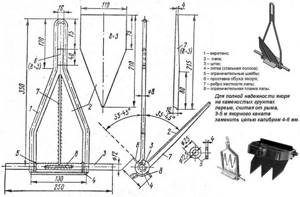
Drawings of the Kurbatov anchor and the appearance of the Trident anchor
About floating anchors
A drogue does not hold the ship in place. He holds it with his nose against the wave or current. In fleets, standard floating anchors are rarely used, except on expedition ships. Probably from a sailor's superstition: during a voyage or voyage (if the ship is a military one), the sea anchor is most often thrown out when it is time to give an SOS. Any floating anchor operates on the principle of a parachute.
However, in amateur fishing, floating anchors find quite utilitarian use. Some species of fish swim downstream in a school to feed, and then leave the core and return to their original position. It is clear that by staying in a boat above the school, you can expect a larger catch.
It is very easy to make a fishing anchor for a PVC boat from 4-5 2 liter PET bottles, holding them in a row with tape. Then the ends of a nylon cord are tied to the necks of the outer bottles, a loop of it is tied behind the bottoms and tied with the same tape. The rope from the boat is tied to a loop of the cord. So it is necessary that the bottles meet the flow of the current with the most streamlined surface, and rely on the thrust from the boat to rest against the least streamlined water, as befits a parachute. Setting up such a sea anchor for almost any boat is also easy: to do this, the bottles are partially filled with water or sand.
How to get rid of a stock
Let's take another look at the drawings of the anchors most suitable for inflatable boats: Danforth and Kurbatov. What is bad about them for a PVC boat? Right. Stock. It gets in the way in a tight boat and can damage it.

How to make a Danforth anchor without a rod
“Theoretically-paper” Danforth anchors are necessarily equipped with a rod (on the left in the figure); without it, they lose the properties of self-alignment, absolute tenacity, and on a loose bottom they become unreliable. But let's think again: after all, a real anchor definitely weighs something. How to use its mass to get rid of the stem while maintaining all other qualities? The result is (see photo on the right in the figure):
- Let's increase the weight of the anchor by making it (to overall dimensions 220..250x350 mm) legs made of 5 mm steel, a spindle and axle of the legs made of 14 mm rod, and a butt of 10 mm.
- Move the paws away from the spindle for approx. by 1/5 of their width.
- Let's replace the installation blades-limiters of the Danforth anchor with a skirt, similar to that of a Hall anchor, and protrusions welded onto the lower end of the spindle, against which it will rest (the angle of rotation of the paws is 30 degrees).
- At the same time, we’ll round the ends of the paws so that we don’t tear the boat.
And - amazing thing! This hybrid anchor also turns out to be absolutely tenacious and self-aligning! Unfortunately, there is no theory for it yet. In the same way as for rodless anchors for inflatable boats with Hall camber, see Fig.

The influence of the camber of the arms of a PVC boat anchor on the need to supply it with a rod.
How to make the anchor on the right in the figure with your own hands, which looks similar to the Hall anchor, and download its drawings, see the video:
Video: homemade anchor for a PVC boat
Danforth's anchor is still a teenager among his brothers, and sometimes unexpected properties are discovered in him. So, for example, if the same boat and under the same sailing conditions, which the Kurbatov anchor does not hold well (see above), is equipped with a Danforth “paper” anchor weighing only 1 kg, it will hold it. And another amateur idea, proven in practice, is to make a Danforth anchor for a 1-2-seater boat PVC detachable legs, rearranged either with a convergence towards the spindle, or with a camber outwards. In the first case, it will be better to hold the anchor on dense and rocky soils, and in the second - on a loose, weak bottom. How to make a transformer anchor for a PVC boat, see next. video:
Video: DIY transforming anchor
One thing is clear: Hall’s method of self-installing the anchor at the bottom using the camber of the legs and the skirt allows you to get rid of the rod. Many amateurs, without knowing it, make themselves lightweight anchors with increased holding power with claws and a rod, like the original Danforth one, see fig. below. But in this case, the anchor needs a rod like a ship’s cat needs a canary seed. Without a rod, such an anchor will only cling faster and become more reliable.
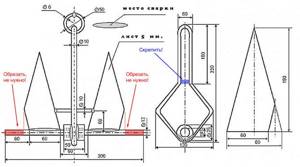
How to get rid of a rod in a PVC boat anchor
How to increase your fish catch?
Today there are many ways to increase your catch. One of the interesting options is a bite activator. It attracts fish from long distances and stimulates its appetite with the help of pheromones that are included in the composition and influence the behavior of individuals. Pheromones are natural biologically active substances that are secreted by living organisms, including fish.
Does it all really work? How not to buy a pig in a poke? Read the details in our review.
Attention, TODAY only!
All fishermen who have a boat have to use an anchor. Many people make do with a suitable-sized stone or a bag of sand, but of course, a metal anchor is much more convenient.
There are many models of steel factory and homemade anchors used for inflatable boats.
True, they have serious disadvantages:
- “horns” take up a lot of space;
- sharpened “paws” can tear the rubber boat.
In addition, an anchor with claws often gets stuck at the bottom, caught on a stone or snag. It happens that you can’t unhook it, you just have to throw it in the river.
In a fast current, a tightly caught anchor can even cause a wreck.
I first saw a lead anchor in the form of a tetrahedral pyramid on the Deschutes mountain river in the western United States. A small inverted pyramid with a ring at the base held a large inflatable raft with a guide and three fishermen, and in a decent current.
And yet the cat is an anchor!
It's time to remember the cat anchor and at the same time the mushroom anchor, because... they are also interconnected. The path of origin of the mushroom anchor from the folding cat is illustrated by the left part of the trace. rice. The good thing about a mushroom anchor is that, with minimal dimensions and complete safety for an inflatable boat, it holds it on a very, very weak bottom - deeply silted, floating fine sand, etc. And also because its size and weight are smaller than other anchors, depending on the length and displacement of the vessel. However, a mushroom-shaped anchor for a marshy bottom must be equipped with a butt on the trend: it is impossible to pull it out by the eye or butt if it gets pulled into the ground without scooping it up with the side.

From grapple anchor to mushroom anchor. Drawings of a folding mini cat anchor for a PVC boat
You can make a mushroom-shaped anchor from the bottom of a household gas cylinder; Already an anchor from the bottom of a 5 liter cylinder reliably holds a 1-2 seater PVC boat. The bottom of the cylinder is cut off where it meets the vertical walls (the tangent slope is the same as that of the Admiralty anchor - 40 degrees). 3-4 holes with a diameter of 30-40 mm are cut into the bottom so that the soil is pressed through them and does not clog the anchor blade.
The spindle of a mushroom-shaped balloon anchor is made from a piece of steel pipe with a diameter of 40-60 mm. Its length for 1-2 seater boats is from 200 mm; for 3-4 seater – from 300 mm. The butt of their bent 10 mm reinforcement is welded to the top of the spindle. And to the trend - a 6-8 mm shank. For complete reliability of such an anchor, the spindle is filled with lead at any bottom.
The evolution of the grapple anchor can be taken along a different path, as exemplified by the drawings of a folding mini-anchor for a 1-3-seater PVC boat in the rest of the picture. Its method of creating holding force is completely unique: when dragged, this anchor turns, screwing into the bottom soil or clinging to stones with its paws. For greater reliability, it is advisable to weld its spindle from pipe sections and fill it with lead. The tenacity of this anchor is not great: it needs to be wired about a meter to secure it properly. But the folded mini-anchor can be carried in your pocket, and it is a non-losing anchor: a tug on the anchor-cable is enough for its stuck paw to come out of the crack or for the anchor pulled into the swamp to go up (vira, as a sailor would say).
Cat made from scrap materials
The grapple anchor has one more advantage: it can be made from scrap materials. Specifically, from a couple of crooked fragments or scraps of branches for the paws, a stone of a suitable size and shape, and another piece of a crooked branch or flyer for the spindle. The paw branches are tied crosswise, a stone is tied to the crosshair; then add a flyer or a spindle branch to it. There are cases where people survived in extreme conditions thanks to a homemade grappling anchor made from scrap materials.
Note: however, do not forget that the inherent defect of any grapple anchor is that the boat can sit on its paw with the bottom!
How to make a homemade pyramid-shaped boat anchor from PVC
I cast such anchors from solid lead, for example, from used car batteries. The casting mold is easy to make from sheet metal.
My mold consists of two halves that are folded together, tied with wire and inserted into a hole dug in the sand. All that remains is to place a pre-prepared eye made of thick wire into the mold and pour the required amount of molten lead into it.
The approximate weight of lead pyramidal anchors of different sizes is given in the table.
If you know how to work with metal, you can make a similar anchor from square steel plates of different sizes.
The plates are assembled on a bolt, with the smallest one at the bottom. Instead of a head, this bolt should have a ring to which the anchor rope is tied.
A collapsible homemade anchor of this design is convenient in that you can quickly detach several of the upper, largest plates, thereby reducing its weight. This anchor is suitable for boats of different sizes and for different bodies of water.
The purpose of the anchor is to hold the boat, taking into account possible river currents, gusts of wind and when waves occur.
For many fishing enthusiasts, this function is performed by a wide variety of available tools.
Many people make anchors with their own hands, rightly believing. that it will come out much cheaper than store-bought.
If there is something wrong with the anchor
For sewn and, especially, inflatable boats, the weight and compactness of the anchor are of decisive importance, so anchors for them should be made as light as possible. But what if the anchor crawls?
A way to increase the holding force of an anchor has been known for a long time: a weight on an anchor-cable or anchor-chain, top left in Fig. Anyone who remembers school physics can easily calculate that a load of half the weight of an anchor can double its holding force or more. For a light anchor of an inflatable or sewn boat, a lead weight of 1-2 kg is sufficient; it won't take up much space. For installation on the cable, the weight is equipped with a carabiner; it can be firmly secured to the weight. They lower the load on a fishing line, which is always at hand when fishing.
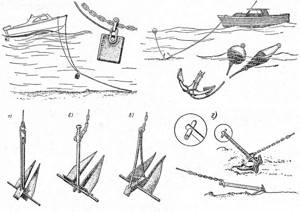
Ways to increase the holding force of an anchor and free a stuck anchor
Another emergency situation with the anchor is stuck. The way to free a stuck anchor is also known: a buoy attached to a trend and a float buoy. To get the anchor out of the dead hook, pull the buoy rope. If there is no support for it at the anchor, and the bottom is obviously “mean” (marsh, rocky), the buoy can be tied to the trend, as shown in Fig.
On small vessels, holding a buoy and a buoy is often inconvenient. If the anchor has swivel legs or one of its modifications, a radical means of turning the anchor into a non-losing one is a sliding eye, pos. a-d in Fig. The most reliable is the sliding eye in pos. c, but the anchor with it is cumbersome. Release the anchor as shown in pos. d: they allow the ship to move against the tension of the anchor cable.
What characteristics should an anchor have?
- Light weight
is very important, since such a boat is made of very light material and if there is an overload, it will simply capsize. As a result, persons who are there may suffer. - Folding claws
- as you know, the anchor has sharp claws that can damage the boat, and it is inflatable, so make sure that it has folding claws. As practice shows, the use of such an anchor is very simple and, despite all the factors, it takes up little space on the boat, i.e. it is quite compact. - High holding force –
the main task is to hold the boat in a certain place. Thus, this accessory must be made in such a way that it can easily be fixed at depth. In such cases, it is necessary to pay great attention to the material from which the anchor is made. According to experts, foreign ones are more thought out and are very different from ours. True, there are manufacturers who have practically managed to catch up with their competitors. - Corrosion resistance
– again the material plays the most important role, so it must be made of an alloy that is resistant to corrosion even though it always functions with water. It is worth noting that it needs to be properly cared for. One of the most important is cleaning, since it is fixed at a depth where there is dirt that can destroy the outer layer of the anchor. - Ease of removal from hooks
- it constantly clings at the depth of a river or other aquatic environment, where there are many obstacles to returning the anchor. This device must be chosen so that there are paths that will facilitate return from the bottom.
